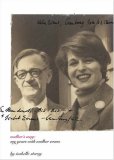
See larger photo
| Walker Evans: Cuba
     
[Click on the appropriate flag to buy the book] |
Product Details
Hardcover
96 pages
J Paul Getty Museum Pubns
Published 2001
From Publishers Weekly
In 1933, fledgling photographer Walker Evans was asked to make photographs of Cuban society for radical journalist Carleton Beals's book The Crime of Cuba, an exposé about Cuban dictator Gerardo Machado's corruption and Cuba's exploitation by the US. In Walker Evans: Cuba, from the collection at the Getty Museum, the 73 images of people, urban landscapes and Cuban business-as-usual seem influenced by Diego Rivera's politicized content, Hemingway's "stripped down, minimal style" and the "characteristic emptiness" of Eugene Atget's photography, says the Getty's Associate Curator Judith Keller in her introduction. This portrait of pre-Castro Cuba reminds viewers that Cuba has experienced social strife since early on, and that Cuban-U.S. relations have long been problematic. Poet and novelist Andrei Codrescu's essay investigates Evans's artistic and political sensibilities at this early point in his career, and the entrenched complexities of the country he attempted to represent.
Copyright 2001 Cahners Business Information, Inc.
From Booklist
Evans' 1933 Cuban photographs aren't as familiar as those in his famous collaboration with James Agee, Let Us Now Praise Famous Men (1936). Made for a Marxist polemic against the Machado dictatorship, they show, Codrescu says in his appreciative essay, people looking less miserable and downtrodden than the text led readers to expect. Beggars, itinerants, hard laborers, and a peasant family come to Havana--nearly all look self-possessed and strong, if often exhausted. Many middle-class people... read more
Book Description
In 1933, Walker Evans traveled to Cuba to take photographs for The Crime of Cuba, a book by the American journalist Carleton Beals. Beals's explicit goal was to expose the corruption of Cuban dictator Gerardo Machado and the long, torturous relationship between the United States and its island neighbor. The photographs Evans made during his visit to Cuba are fascinating for both their subject matter and the evidence they provide of the young photographer's artistic development. Walker Evans: Cuba brings together more than sixty of these images-all from the Getty Museum's extensive holdings of the photographer's work-along with an essay by the noted writer and commentator Andrei Codrescu.
Codrescu's spirited text helps to provide a sense of the aesthetic and political forces that were shaping Evans's art in the early 1930s. He argues that Evans's photographs are the work of a young artist whose temperament was distinctly at odds with Beals's impassioned rhetoric. Looking closely at individual photographs, Codrescu shows that Evans was just beginning to combine his early, formalist aesthetic with the social concerns that would figure so prominently in his later work. Evans's images and Codrescu's lively, insightful essay provide a compelling study of a major artist at an important juncture in his career. |
Manuel Alvarez Bravo, Henri Cartier-Bresson, and Walker Evans.
Documentary and Anti-Graphic Photographs: A Reconstruction of the 1935 Exhibition at the Julien Levy Gallery in New York.
Alvarez Bravo (Photographer); Henri Cartier-Bresson (Photographer); Walker Evans (Photographer); Daniel Giradin (Essay); & Ian Jeffrey (Essay) |  |
|
Many Are Called
Walker Evans (Photographer) |  |
|
Walker Evans: Signs
Walker Evans (Photographer); Andrei Codrescu; & J. Paul Getty Museum |  |
|
Walker Evans: Cuba
Walker Evans (Photographer); Andrei Codrescu; & Judith Keller (Introduction) |  |
|
Incognito: Limited Edition
Walker Evans (Photographer); & Leslie Katz (Compiler) |  |
|
Walker Evans: Photographs for the Farm Security Administration, 1935-1938: A Catalog of Photographic Prints Available from the Farm Security Admini
Walker Evans (Photographer); & Library of Congress |  |
|
Walker Evans: Florida
Walker Evans (Photographer); & Robert Plunket |  |
|
|
Walker Evans: Polaroids
Walker Evans (Photographer); & Jeff L. Rosenheim |  |
|
Documenting America, 1935-1943 (Approaches to American Culture, No 2)
Carl Fleischhauer (Editor); Beverly W. Brannan (Editor); & Lawrence W. Levine (Editor) |  |
|
Walker Evans Simple Secrets: Photographs from the Collection of Marian and Benjamin A. Hill
Ellen Fleurov; Marian Hill; & High Museum Of Art |  |
|
|
|
American Photographers of the Depression: Walker Evans, Dorothea Lange and the FSA Photographers (Photofile)
Charles Hagen |  |
|
Walker Evans: American Photographs
Lincoln Kirstein; & Walker Evans (Photographer) |  |
|
Perfect Documents: Walker Evans and African Art, 1935
Virginia Lee-Webb; & Virginia-Lee Webb |  |
|
|
Walker Evans (Photofile)
Gilles Mora (Introduction); & Walker Evans (Photographer) |  |
|
|
Walker Evans: A Biography
Belinda Rathbone |  |
|
|
|
|
Walker Evans (Phaidon 55 S.)
Luc Sante; & Walker Evans |  |
|
Walker’s Way: My Years with Walker Evans
Isabelle Storey (Author) |  |
|
The Last Years of Walker Evans: A First-Hand Account
Jerry L. Thompson; & Walker Evans |  |
|
Reading American Photographs: Images As History: Mathew Brady to Walker Evans
Alan Trachtenberg |  |
|

